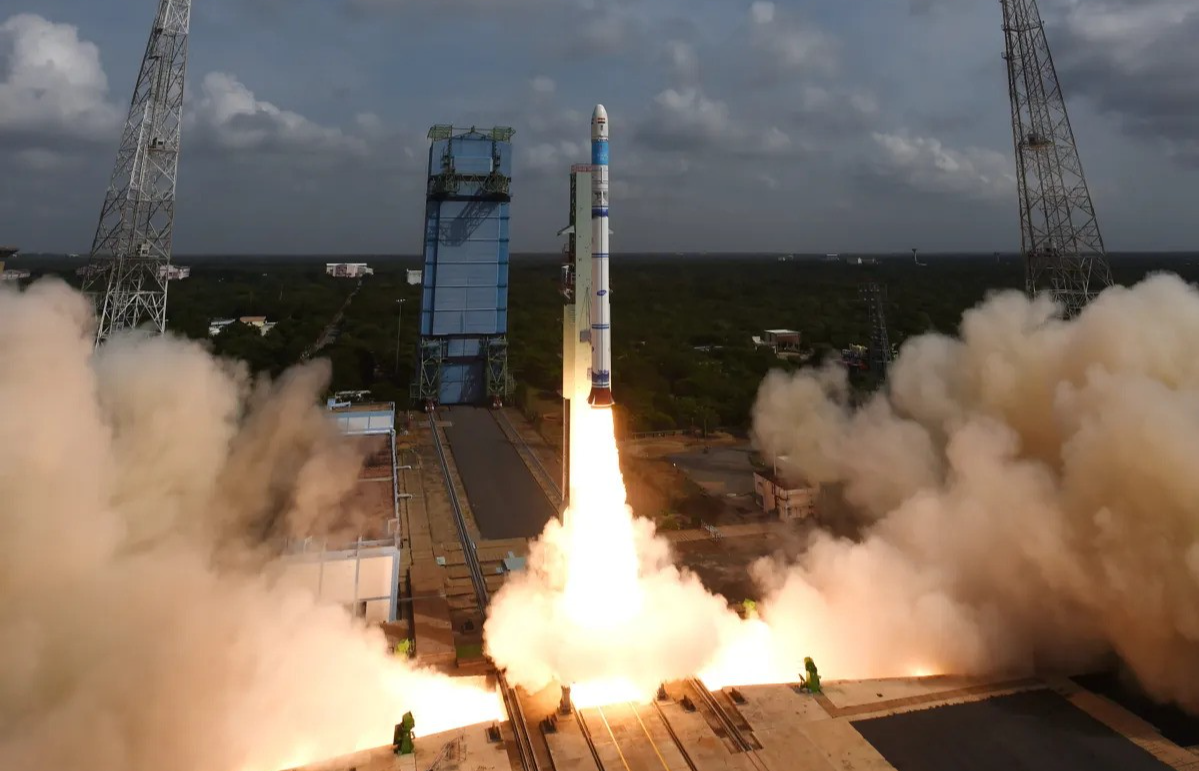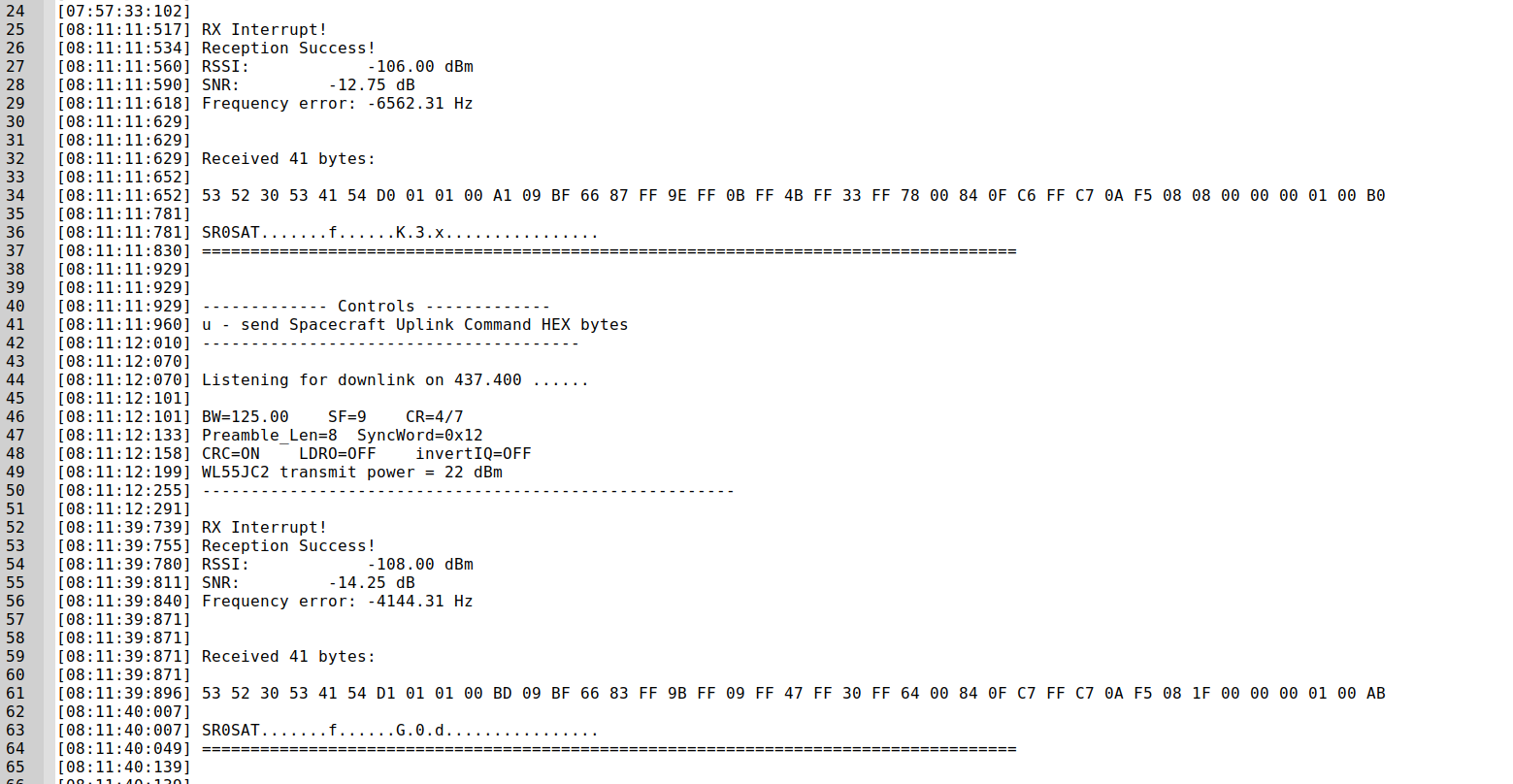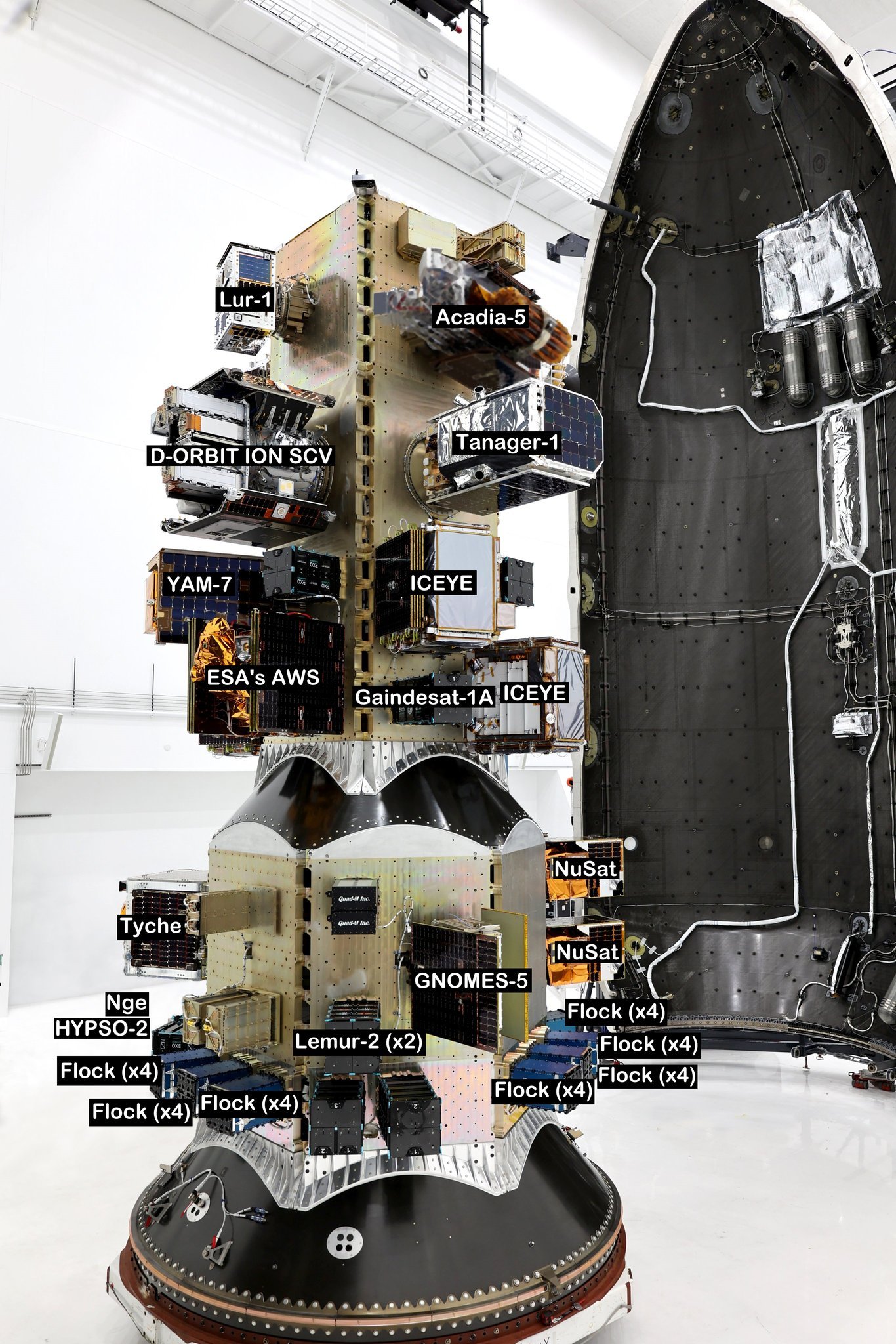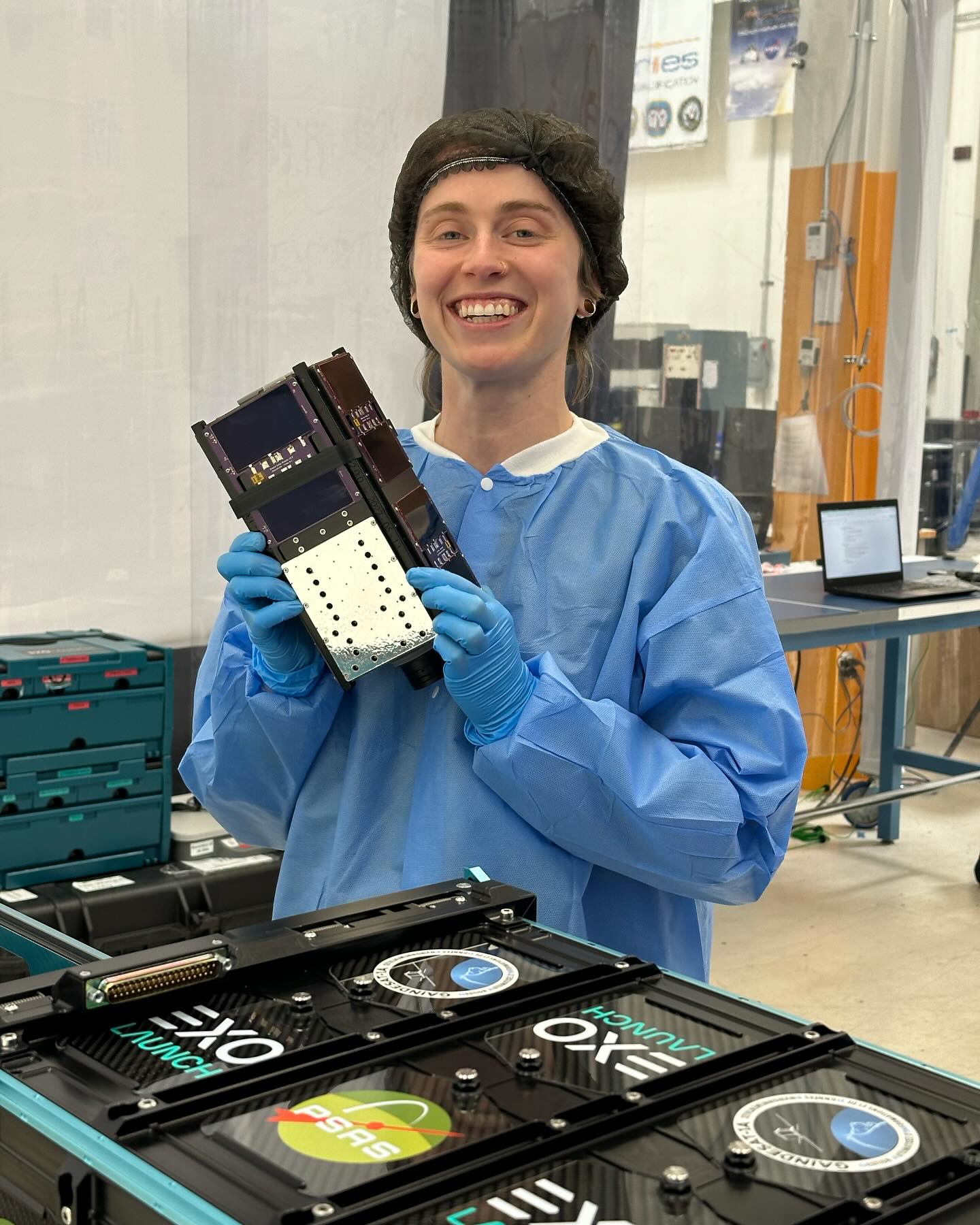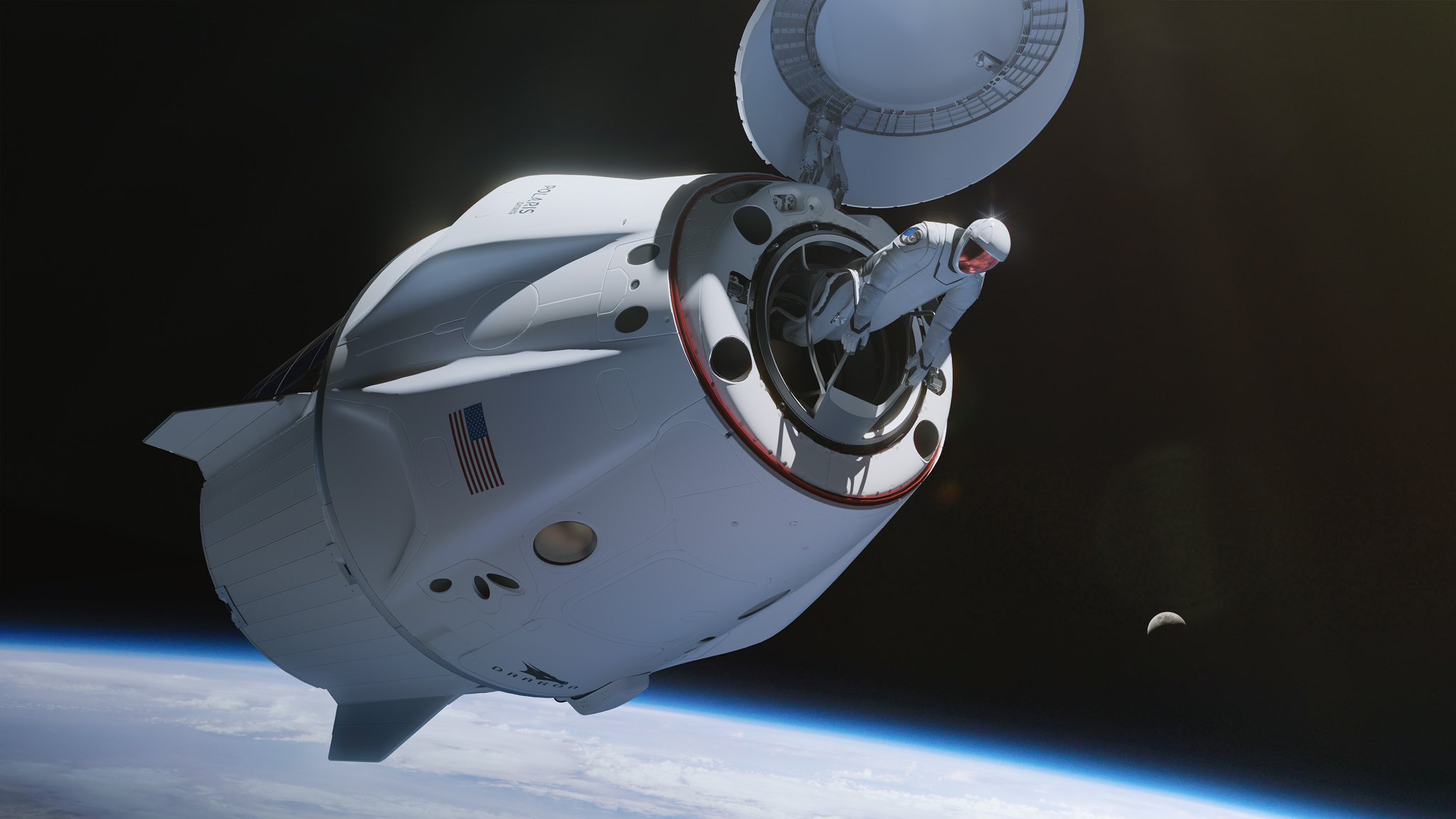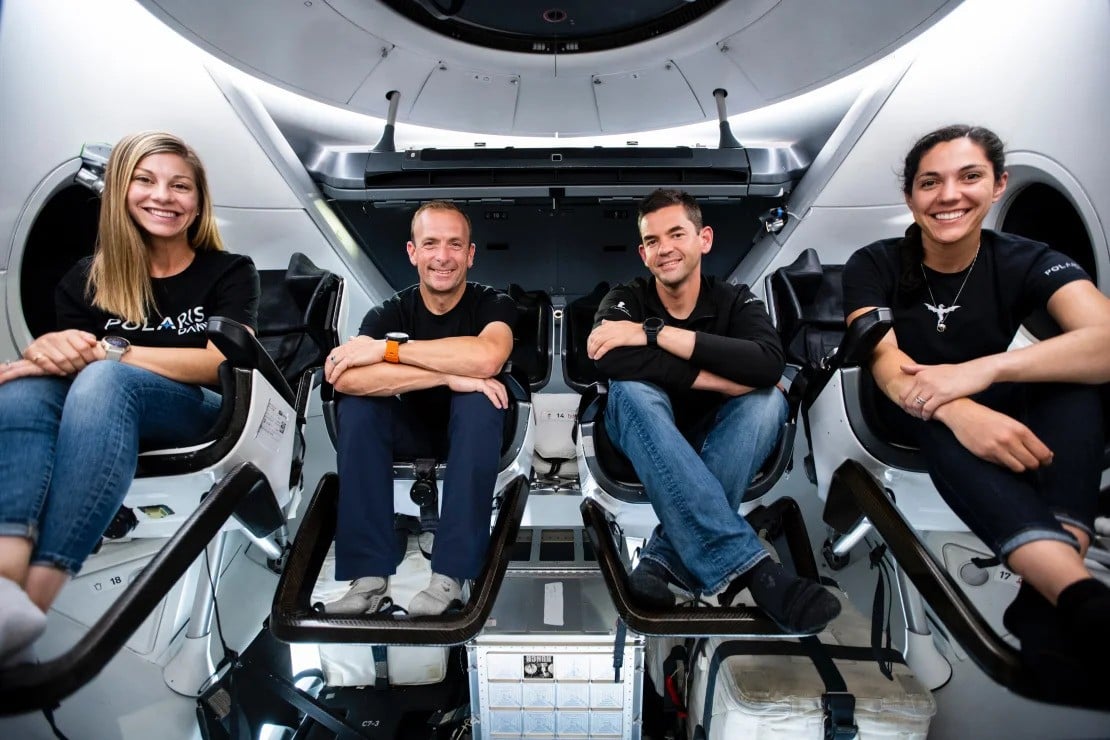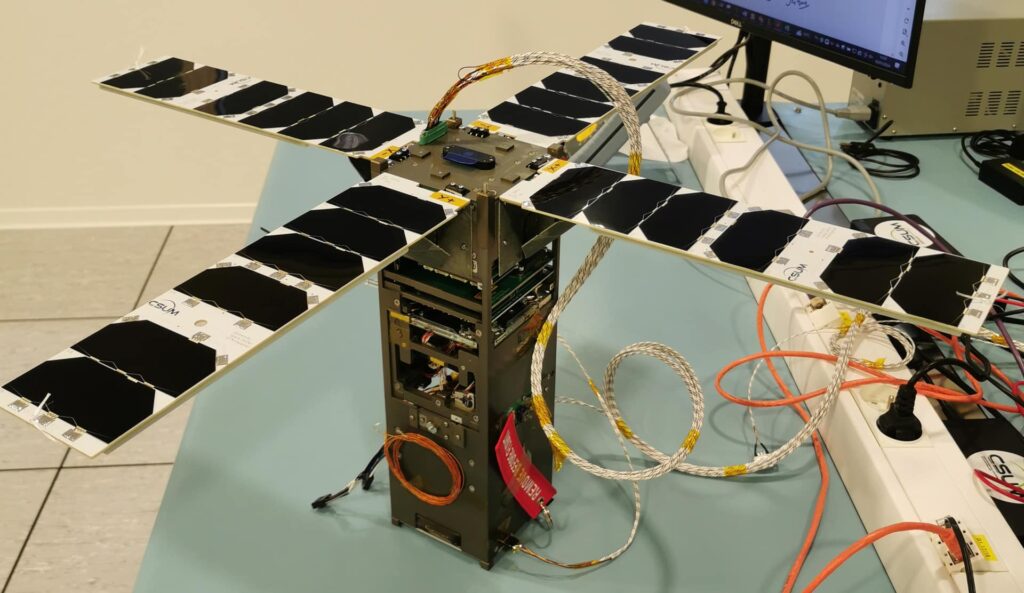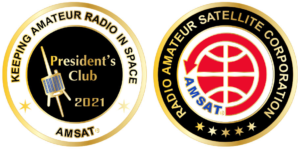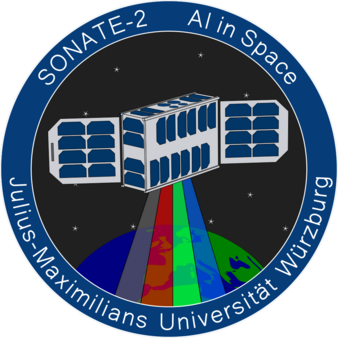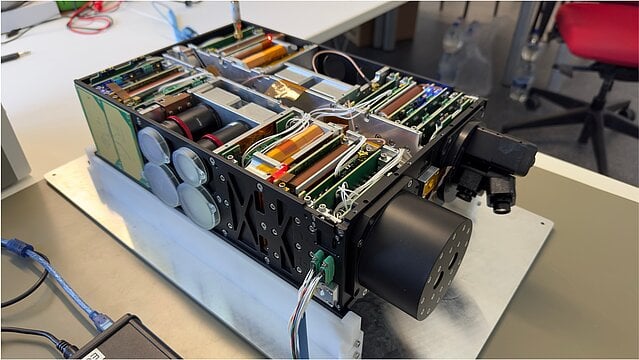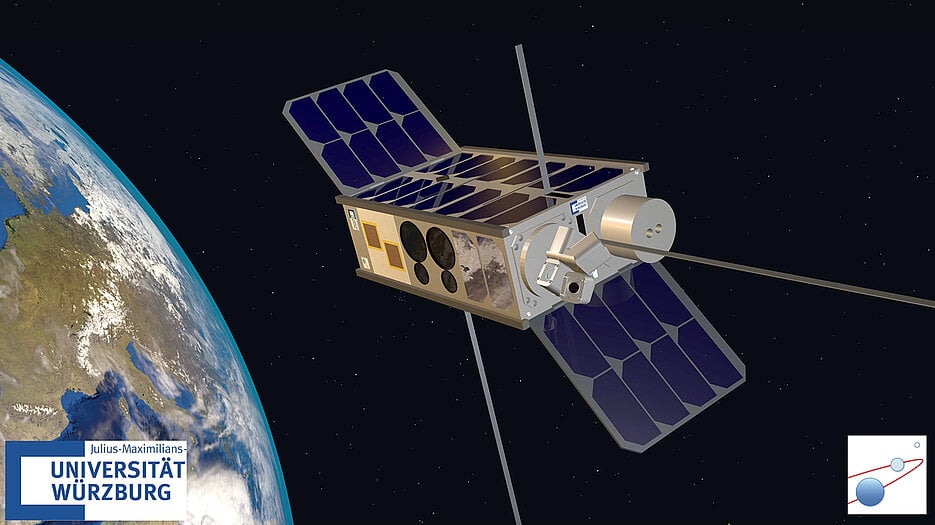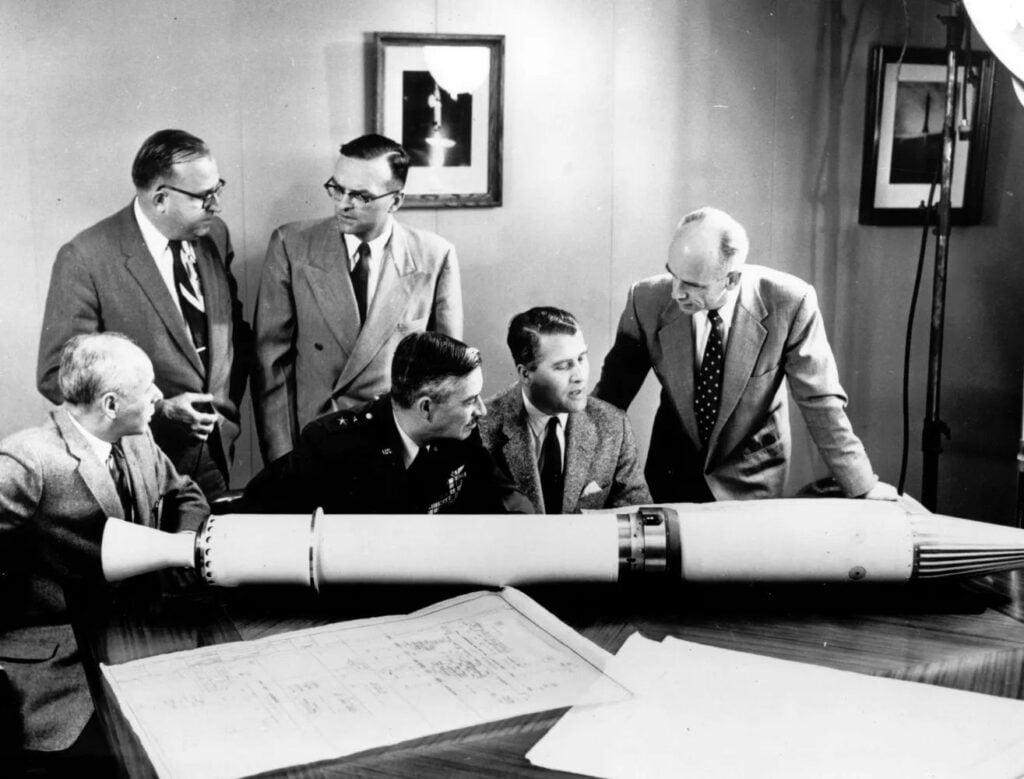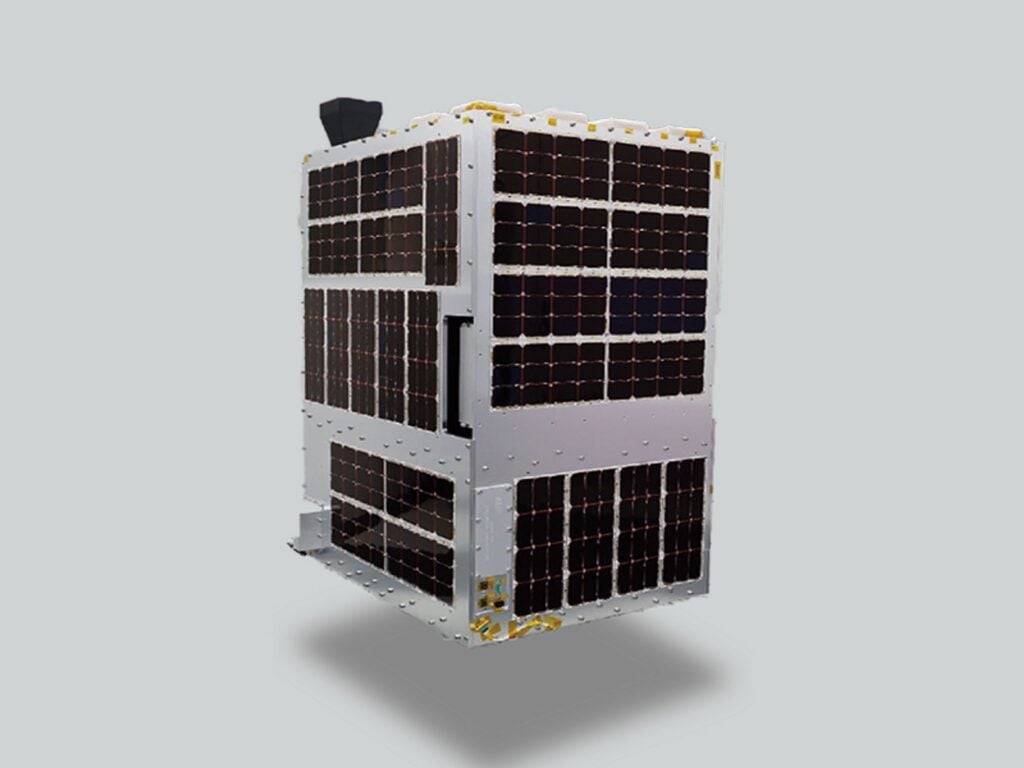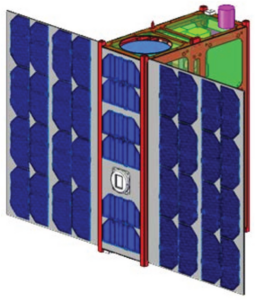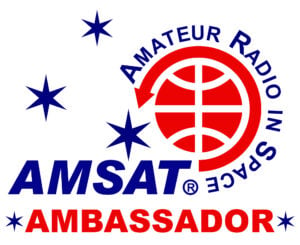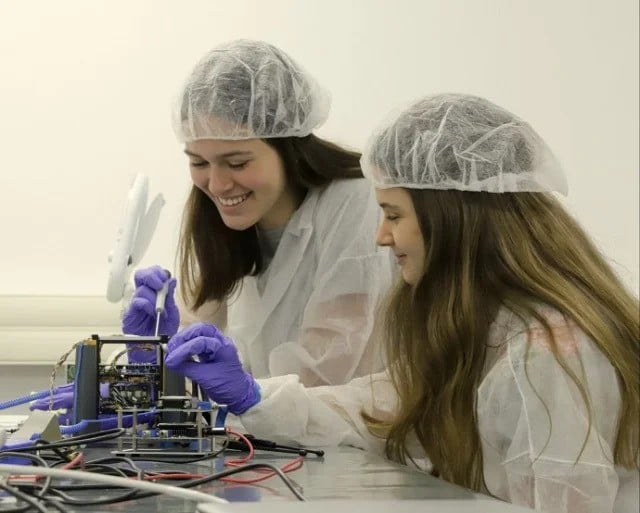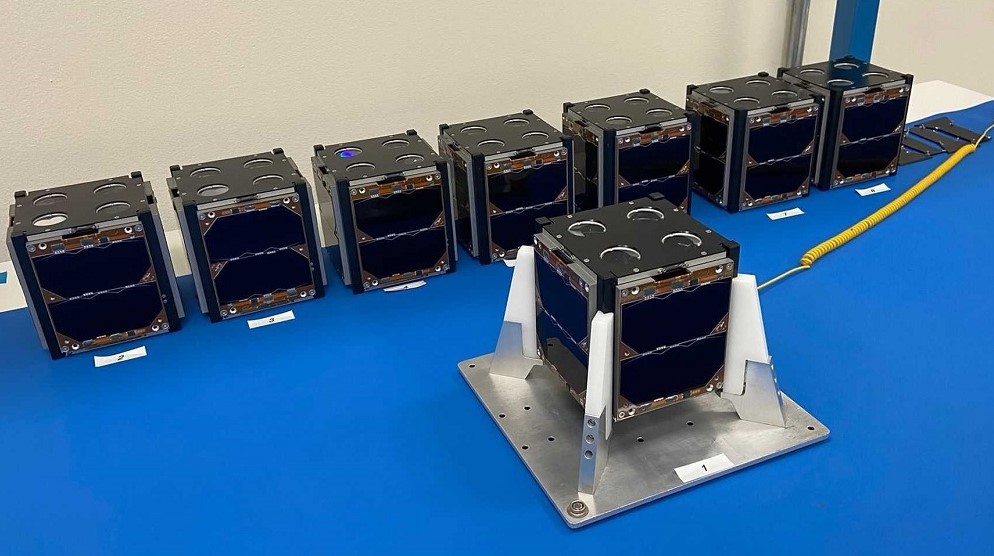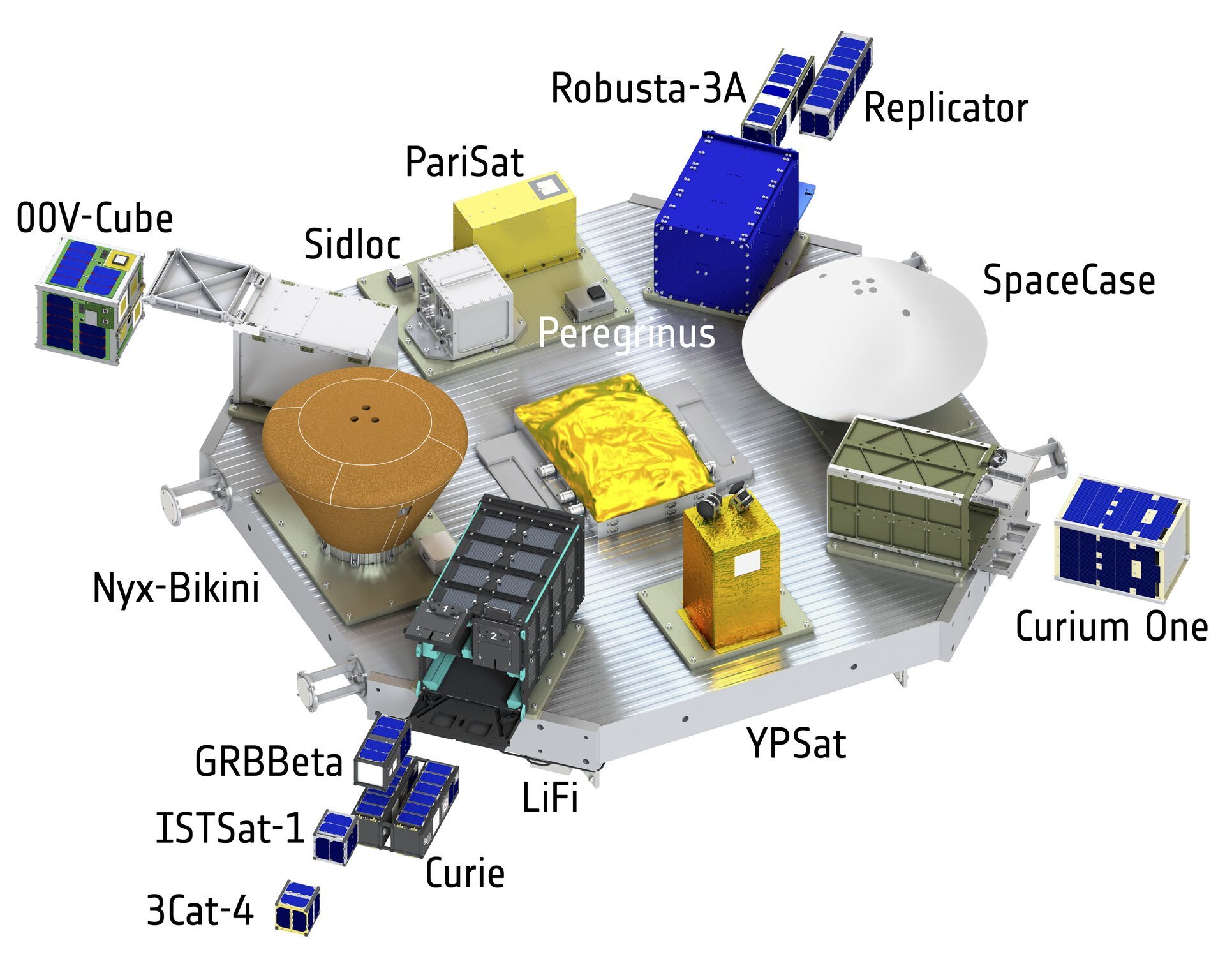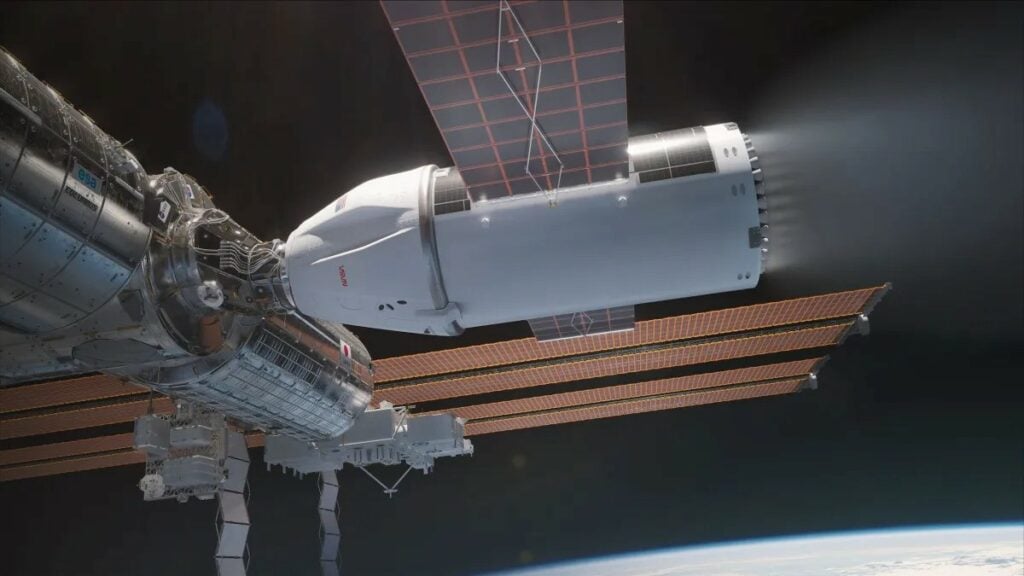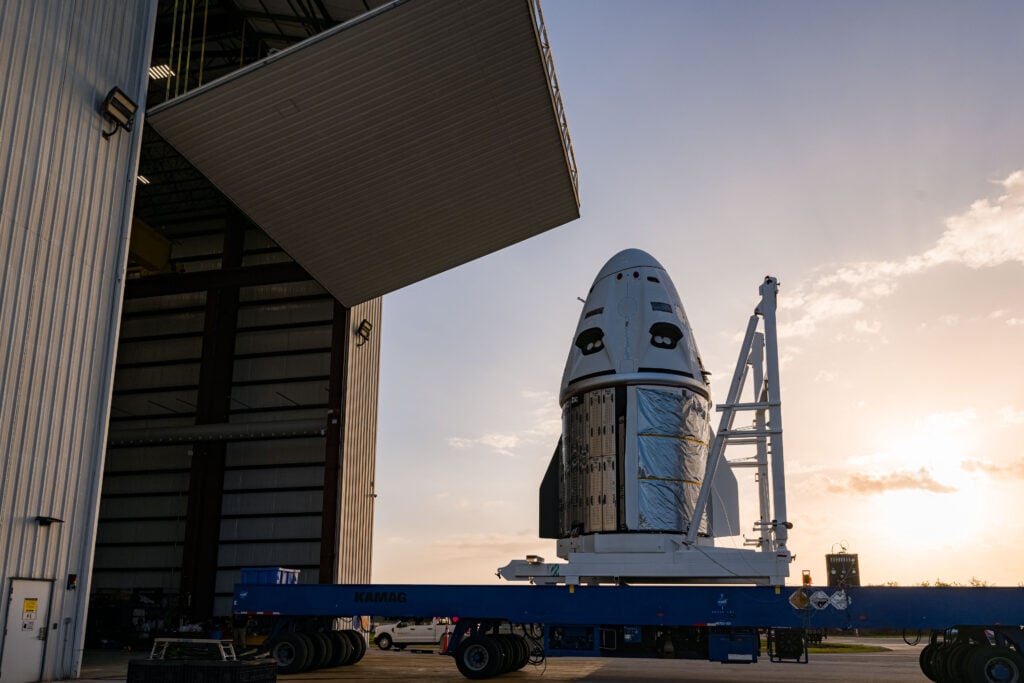In this edition:
* Seven Cubesats Deploy From ISS
* AMSAT Mail Alias Service to End — FINAL NOTICE!
* Japanese Company Takes First Step Toward Removing Space Junk
* Halibut Electronics Releases New EggNOGS Kit for Satellite Antennas
* UNNE-1 and MARIA-G Launch Delayed Until 2025
* Paul D. Graveline, K1YUB, Silent Key
* Changes to AMSAT-NA TLE Distribution
* ARISS News
* Upcoming Satellite Operations
* AMSAT Ambassador Activities
* Satellite Shorts From All Over
The AMSAT News Service bulletins are a free, weekly news and information service of AMSAT, the Radio Amateur Satellite Corporation. ANS publishes news related to Amateur Radio in Space including reports on the activities of a worldwide group of Amateur Radio operators who share an active interest in designing, building, launching and communicating through analog and digital Amateur Radio satellites.
The news feed on http://www.amsat.org publishes news of Amateur Radio in Space as soon as our volunteers can post it.
Please send any amateur satellite news or reports to: ans-editor [at] amsat.org
You can sign up for free e-mail delivery of the AMSAT News Service Bulletins via the ANS List; to join this list see: https://mailman.amsat.org/postorius/lists/ans.amsat.org/
ANS-245 AMSAT News Service Weekly Bulletins
From: Radio Amateur Satellite Corporation
DATE 2024 Sept 01
The 42nd Annual AMSAT Space Symposium and Annual General Meeting will be held on Friday through Saturday, October 25-26, 2024
DoubleTree by Hilton Tampa Rocky Point Waterfront in Tampa, Florida. Click Here to Register Now

Rooms can be reserved at https://www.hilton.com/en/attend-my-event/radioamateursatellite/
If you’re interested in presenting or submitting a paper, see the Call for Papers webpage
Seven Cubesats Deploy From ISS
Seven CubeSats deployed from Japanese Experiment Module “Kibo” on Thursday, August 29.
According to the IARU Amateur Satellite Frequency Coordination, six of these satellites, CosmoGirl-Sat, SaganSat0, SAKURA, Binar2, Binar3 and Binar4, operate on the amateur bands. Three of them carry APRS digipeaters operating on the world-wide APRS frequency of 145.825 MHz.
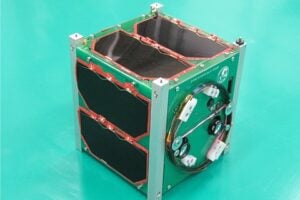 Image by Cosmo Girls Amateur Radio Club
Image by Cosmo Girls Amateur Radio Club
CosmoGirl-Sat 145.825MHz, 437.120MHz
APRS VHF, callsign JS1YOI
CW, 4k8 GMSK UHF
A 1U cubesat built by Cosmo Girls Amateur Radio Club, a group of Japanese women established under the theme of “Getting closer to the universe.” The satellite also carries a high-resolution camera for earth imaging, as well as a short message UHF store-and-forward system.
SaganSat0 145.825MHz, 437.050MH
APRS VHF
GMSK 4k8, CW UHF
A 1U cubesat built by students at various high schools in the Saga Prefecture of Japan. The satellite also carries an infrared camera and gamma ray detector.
SAKURA 145.825MHz, 437.375MHz
APRS VHF
GMSK 4k8 UHF
A 1U cubesat built by the Chiba Institute of Technology, a university in Narashino, Japan. The satellite also carries experiments designed to monitor sunspots and solar flares, as well as to assess environmental damage on earth.
Binar-2 437.700MHz, Binar-3 437.850MHz, Binar-4 437.925MHz
CW, OQPSK 100/38.4kbps, GFSK 19.2/9.6/1.2kbps
Three cubesats built by Curtin University in Australia designed to test radiation shielding materials and modeling of re-entry data from LEO.
Info from
7 CubeSats were deployed from “Kibo” on Thursday, August 29, 2024.
https://humans-in-space.jaxa.jp/en/biz-lab/news/detail/004129.html
[ANS thanks Masa Arai, JN1GKZ, for the above information.]
The 2024 AMSAT President’s Club coins are here now!
Help Support GOLF and Fox Plus
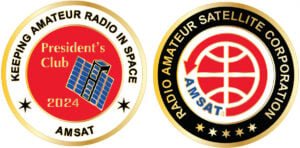
Join the AMSAT President’s Club today and help
Keep Amateur Radio in Space!
https://www.amsat.org/join-the-amsat-presidents-club/
AMSAT Mail Alias Service to End — FINAL NOTICE!
A long-standing member service, the AMSAT Mail Alias Service was scheduled to end on August 31, 2024, but a day or two of grace period has been added.
Members should understand that the email alias service, the news and bulletin board subscription lists and the membership portal are three separate systems.
Persons using the Mail Alias Service should immediately migrate to a different email account so they do not lose receipt of personal emails. Notify your friends and business accounts of the change.
Persons wishing to continue to receive AMSAT News Service Weekly Bulletins and AMSAT-BB posts or official messages from AMSAT itself should update their subscription addresses at https://mailman.amsat.org/
Members are especially asked to make sure they are NOT using a [email protected] as their registered email address in the AMSAT membership portal. Members can easily change their registered member email address by logging into the portal and updating their profile at https://mailman.amsat.org/.
A mail alias on AMSAT.ORG permitted people to send an email to members without knowing their actual internet email address. They just needed to know their amateur radio callsign.
Unfortunately, the unchecked rise in domain name hacking and email account high-jacking has made it impossible to sustain this service at a cost-effective level. The number of [email protected] email accounts that had been hijacked and converted to zombie spam accounts over the years had led many internet service providers and gateway centers to ban all @amsat.org email addresses, including those business accounts of AMSAT officers and officials. The tireless efforts of AMSAT’s all volunteer IT staff has worked for years to repair much of the damage, but AMSAT still get complaints from members who are not getting their personal emails, ANS bulletins or AMSAT-BB posts because of persistent delivery problems.
It has come to the point where the AMSAT volunteer IT staff can no longer keep up with the maintenance requirements to keep the alias mail list clean and to work with email gateways to remove blocks. And, after considerable investigation into alternative paid email services, AMSAT leadership decided that the money required to keep an email alias system alive would be better spent on building and flying satellites for its members.
[ANS thanks the AMSAT IT Team for the above information]
Japanese Company Takes First Step Toward Removing Space Junk
There are more than 2,000 mostly intact dead rockets circling the Earth, but until this year, no one ever launched a satellite to go see what one looked like after many years of tumbling around the planet.
In February, a Japanese company named Astroscale sent a small satellite into low-Earth orbit on top of a Rocket Lab launcher. A couple of months later, Astroscale’s ADRAS-J (Active Debris Removal by Astroscale-Japan) spacecraft completed its pursuit of a Japanese rocket stuck in orbit for more than 15 years.
ADRAS-J photographed the upper stage of an H-IIA rocket from a range of several hundred meters and then backed away. This was the first publicly released image of space debris captured from another spacecraft using rendezvous and proximity operations.
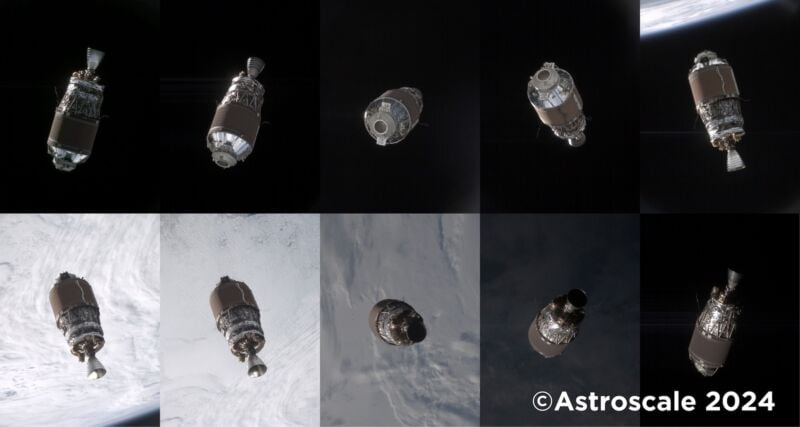 Astroscale’s ADRAS-J spacecraft captured these views of the H-IIA rocket upper stage on July 15. [Credit: Astroscale]
Astroscale’s ADRAS-J spacecraft captured these views of the H-IIA rocket upper stage on July 15. [Credit: Astroscale]
Since then, Astroscale has pulled off more complex maneuvers around the H-IIA upper stage, which hasn’t been controlled since it deployed a Japanese climate research satellite in January 2009. Astroscale attempted to complete a 360-degree fly-around of the H-IIA rocket last month, but the spacecraft triggered an autonomous abort one-third through the maneuver after detecting an attitude anomaly.
ADRAS-J is the first mission to approach a piece of space debris, which comes with more challenges. The H-IIA upper stage lacks laser reflectors and targeting aids that would help an approaching spacecraft navigate its way closer.
A few years ago, the Japan Aerospace Exploration Agency (JAXA) cinched a public-private partnership with Astroscale to demonstrate technologies the private sector could use to remove large pieces of space debris littering low-Earth orbit. The same robotic technologies could also apply to satellite servicing or refueling missions.
With more financial assistance from JAXA, Astroscale is developing a follow-on mission called ADRAS-J2 to dock with the same H-IIA rocket visited by the ongoing mission, then steer it on a trajectory to reenter the atmosphere. Astroscale hopes a successful demonstration of this capability on the ADRAS-J2 mission will lead to more contracts from commercial or government operators to remote large pieces of space junk from orbit.
An H-IIA upper stage similar to the one visited by Astroscale’s demo mission broke apart in 2019, creating more than 70 new debris fragments in low-Earth orbit. A predicted close flyby by one of the pieces from the H-IIA upper stage prompted the International Space Station to fire its engines to move out of its path in 2020.
[ANS thanks Ars Technica for the above information. Read the full article at https://bit.ly/4cFO0vW.]
Need new satellite antennas?
Purchase M2 LEO-Packs from the AMSAT Store.
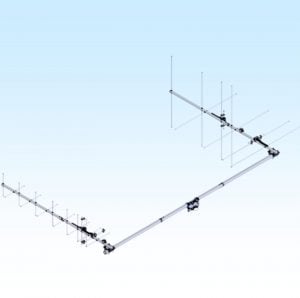
When you purchase through AMSAT, a portion of the proceeds goes towards
Keeping Amateur Radio in Space.
https://amsat.org/product-category/hardware/
Halibut Electronics Releases New EggNOGS Kit for Satellite Antennas
Halibut Electronics has announced the release of its latest product, the EggNOGS kit, designed to facilitate the construction of Egg Beater antennas. This kit is aimed at amateur radio enthusiasts and satellite operators who wish to enhance their communication capabilities, particularly with the SatNOGS network. Priced at $79.00, EggNOGS is available for purchase through Halibut Electronics’ website at https://electronics.halibut.com/product/eggnogs/.
The EggNOGS kit is engineered to address the complexity of building Egg Beater antennas, which are known for their use in satellite communications. The kit includes a range of specialized components that are not typically available at local hardware stores. These components feature a band-specific phasing board that creates a 90-degree phase shift, a critical element in the construction of effective quadrature-fed antennas.
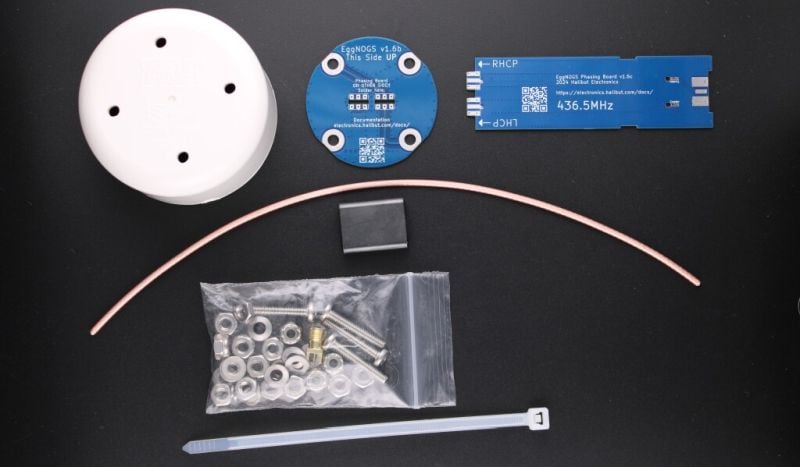 The parts kit. [Credit: Halibut Electronics]
The parts kit. [Credit: Halibut Electronics]
Currently, the EggNOGS kit supports several frequency bands: 137.5MHz, 145.9MHz, 388.0MHz, 401.0MHz, and 436.5MHz. However, due to high demand, the kits for the 137.5MHz and 145.9MHz bands are temporarily out of stock and are expected to be back in inventory by August 28th. Customers can place back orders for these bands in the interim.
The EggNOGS kit is designed to be versatile, compatible with various types of quadrature-fed antennas beyond just Egg Beaters. It can be used with turnstiles, helicals, and other balanced VHF/UHF antennas. Additionally, it works with any radio system, including low-power transmitters, making it a flexible option for a range of communication needs.
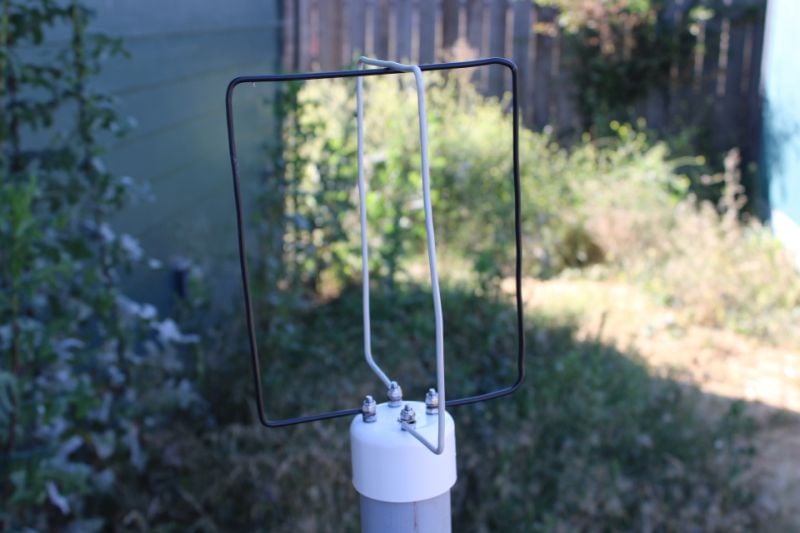 Antenna closeup [Credit: Halibut Electronics]
Antenna closeup [Credit: Halibut Electronics]
The kit includes essential parts such as circuit boards for signal routing and phasing, a common mode current choke, and stainless steel mounting hardware. Builders will need to source additional materials, such as a section of PVC pipe and materials for the aerial loops and ground plane, from local hardware stores. The default feed point connector is SMA, but there is an option to upgrade to BNC or Type-F connectors.
The EggNOGS kit is capable of handling moderate transmit power, with the upper limit still being determined but expected to range between 15W and 50W. The kit is confirmed to handle up to 10W without issues. Halibut Electronics invites feedback from users who may need phasing boards for additional frequencies not currently offered, with the possibility of expanding the product line based on customer demand.
[ANS thanks Halibut Electronics, for the above information]
UNNE-1 and MARIA-G Launch Delayed Until 2025
Due to the significant damage to the RFA’s One launcher stage during the static firing test at SaxaVord’s spaceport in the Shetland Islands, Scotland (UK) on August 19th, AMSAT-EA’s UNNE-1 and MARIA-G satellites launch will be delayed.
They were originally planned for launch on September 30th, and now it is not expected before 2025. Video of the BBC’s coverage of the incident is available here:
https://www.youtube.com/watch?v=DgEn6-8ekJQ
UNNE-1 and MARIA-G are both based on the currently orbiting HADES-D (SO-121) hardware, providing a repeater service for voice and data communications in FM and FSK-derived modes. They have been designed and built by AMSAT-EA together with private sector companies and with the collaboration of Universities and educational centres.
Both satellites will offer licensed radio amateurs around the world the opportunity to make FM and FSK QSOs, including FT modes, such as FT-4 and FT-8, or AX.25/APRS. The satellites will also transmit telemetry with their status, voice messages and CW.
UNNE-1 includes an Arduino-based board with software from Nebrija University of Madrid. The students have developed a small decoding game with a space story as a background. The satellite sends a clue each week in its FSK telemetry so that radio amateurs can solve the challenge. This game will be detailed on the AMSAT EA website and on the Nebrija University one.
MARIA-G also includes two CW reception games/challenges implemented by students from the María Guerrero high school in Collado Villalba, also from the region of Madrid.
One of the games consists of receiving the coordinates of a significant place on Earth (for example a city, a monument…) and the other about receiving a code that will correspond to a question about Science. Both games will have a dedicated web page.
MARIA-G also includes a small experiment, developed by the Fraunhofer-Gesellschaft research center in Germany. It consists of a proof of concept for the transmission of a TS-UNB waveform from a low Earth orbit. Therefore, it will transmit a TS-UNB message according to the ETSI-TS-103-357 standard. It is intended solely as a research and development project with no commercial intention.
The ITU modulation classification would be 100K W2DWW but the bandwidth will be reduced. The operation of this experiment will be carried out by AMSAT-EA.
The UNNE-1 and MARIA-G satellites are part of the Erminaz mission, a joint effort of AMSAT-DL, AMSAT-EA and LibreSpace Foundation, each organization flying its own satellites and using LibreSpace’s PicoBus deployer.
The mission management with the German Space Agency (DLR) and the launcher (RFA), as well as with the UK authorities, has been carried out jointly, with AMSAT DL leading it.
[ANS thanks Felix Páez, EA4GQS, AMSAT EA, for the above information.]
Paul D. Graveline, K1YUB, Silent Key
With heavy hearts, AMSAT and The AMSAT Journal mourn the passing of Journal assistant editor, Paul D. Graveline, K1YUB, on August 19, 2024.
Paul served as an assistant editor for the past seven years, starting with the July/August 2017 issue. In addition to his editing and authoring contributions to the Journal, Paul also served as an active member of the CubeSatSim Educational Materials Team for AMSAT’s Educational Relations program.
Here is how Paul described his ham radio exploits:
“Like many future hams in the 1960s, I became interested in radio by listening to shortwave stations on my grandfather’s old huge Philco radio.
“In 1960, I got a Hallicrafters S120 short wave receiver for Christmas, and I was hooked. A year later, K1DEN got me interested in ham radio. I was issued KN1YUB as a novice, and in 1963, I upgraded to General and K1YUB, which I still use today. Most of my ham operating has been using CW.
“By 1973, I passed my Advanced and Extra which required 20 wpm skills.
“In the 1980s, I worked and taught Novice and General license courses at Tufts Radio in Medford, MA. My time at Tufts included numerous ham conventions from Denver to Clearwater.
“Along with K1TW, I helped reestablish the shortwave focused Boston Area DXers which met on the third Friday of every month. Nearly 35 years later, we still do!
“More recently, I have been spending time in activities to support ham radio.
“For a number of years, I’ve been an Assistant Editor for The AMSAT Journal as well as being engaged, along with KU2Y, KD2XS , KK6NOW and WD6DRI, on an AMSAT project developing the CubeSat Simulator as a learning tool.
“I began following the space weather bulletins from Dr. Tamitha Skov, WX6SWW, better known as “The Space Weather Woman,” a few years back and now am a member of her steering committee, as well as being the Coordinator for her new Super Community project with the objective of sharing space weather knowledge across stakeholder communities like Aurora Chasers and Ham Radio operators. I did a cover story of Dr. Skov in The AMSAT Journal.”
Paul’s good humor, dedication, enthusiasm and many contributions to AMSAT and the larger amateur radio community will be greatly missed.
[ANS thanks Joe Kornowski, KB6IGK, AMSAT Journal Editor-in-Chief, for the above information]
Want to fly the colors on your own grid expedition?
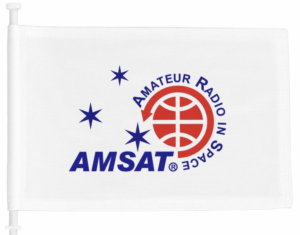
Get your AMSAT car flag and other neat stuff from our Zazzle store!
25% of the purchase price of each product goes towards
Keeping Amateur Radio in Space
https://www.zazzle.com/amsat_gear
Changes to AMSAT-NA TLE Distribution
Two Line Elements or TLEs, often referred to as Keplerian elements or keps in the amateur community, are the inputs to the SGP4 standard mathematical model of spacecraft orbits used by most amateur tracking programs. Weekly updates are completely adequate for most amateur satellites. TLE bulletin files are updated daily in the first hour of the UTC day. New bulletin files will be posted immediately after reliable elements become available for new amateur satellites. More information may be found at https://www.amsat.org/keplerian-elements-resources/.
No changes have been announced for this week.
[ANS thanks Joe Fitzgerald, KM1P, AMSAT Orbital Elements Manager for the above information]
ARISS NEWS
Amateurs and others around the world may listen in on contacts between amateurs operating in schools and allowing students to interact with astronauts and cosmonauts aboard the International Space Station. The downlink frequency on which to listen is 145.800 MHz worldwide.
Would your group like to have an ARISS contact? Here are some upcoming deadlines for be aware of:
For U.S. contacts, proposals are due by 6-Sept. Contacts would be in the first half of 2025.
For Europe, Africa, and the Middle East applications are due by 27-October for second half of 2025.
See https://www.ariss.org/apply-to-host-an-ariss-contact.html for details.

COMPLETED:
Fasta Villa Eucaristica School, Cordoba City, Argentina, direct via LU1HKO
The ISS callsign was presently scheduled to be NA1SS
The crewmember was Jeanette Epps, KF5QNU. The ARISS mentor was VE3TBD.
Contact was successful: Fri 2024-08-30 15:29:39 UTC 42 degrees maximum elevation.
Congratulations to the Fasta Villa Eucaristica School students, Jeanette, mentor VE3TBD, and ground station LU1HKO!
Livestream URL was provided to ARISS https://youtube.com/live/2oQkA6vqdu4?feature=share
The crossband repeater continues to be active (145.990 MHz up {PL 67} & 437.800 MHz down). If any crewmember is so inclined, all they have to do is pick up the microphone, raise the volume up, and talk on the crossband repeater. So give a listen, you just never know.
The packet system is also active (145.825 MHz up & down).
The HamTV system (2395 MHz down), and the SSTV system (145.800 MHz down) are both currently STOWED and not in operation.
As always, if there is an EVA, a docking, or an undocking; the ARISS radios are turned off as part of the safety protocol.
Note, all times are approximate. It is recommended that you do your own orbital prediction or start listening about 10 minutes before the listed time.
The latest information on the operation mode can be found at https://www.ariss.org/current-status-of-iss-stations.html
The latest list of frequencies in use can be found at https://www.ariss.org/contact-the-iss.html
[ANS thanks Charlie Sufana, AJ9N, one of the ARISS operation team mentors for the above information]
Upcoming Satellite Operations
Tom, KB5FHK, will be heading home to Mississippi on Labor Day weekend. His main focus is EM41. He already posted a couple of passes on hams.at.
Mitch, AD0HJ, will be heading up to Fargo/Grand Forks over Labor Day weekend “for some more gridline fun.” Look for him to activate EN06 EN07 EN08 EN16 EN17 EN18 on RS-44. Pass schedule is available on hams.at.
Zach, K8ZRY, will be doing a POTA activation on the EN83/EN84 gridline over the Labor Day holiday. Pass schedule is available on hams.at.
A growing number of satellite rovers are currently engaged in sharing their grid square activations on https://hams.at. By visiting the website, you gain easy access to comprehensive information about the operators responsible for activating specific grid squares. Additionally, you have the ability to assess the match score between yourself and a particular rover for a given pass, while also being able to identify the upcoming satellite passes that are accessible from your location.
[ANS thanks Ian Parsons, K5ZM, AMSAT rover page manager, for the above information]
AMSAT Ambassador Activities
AMSAT Ambassadors provide presentations, demonstrate communicating through amateur satellites, and host information tables at club meetings, hamfests, conventions, maker faires, and other events.
September 7, 2024
Greater Louisville Hamfest
Shepherdsville, KY
AMSAT Forum and Information Table
W4FCL
October 5, 2024
North Star Radio Convention
Hennepin Technical College (North Campus)
Brooklyn Park, Minn.
https://conv2023.tcfmc.org/
AMSAT Forum and Information Table
KØJM and ADØHJ
October 5th, 2024
Central Kentucky Hamfest –
Highlands Baptist Church
2032 Parallel Road
Lexington, KY 40502
https://www.facebook.com/w9khz/
AMSAT and Educational Satellites Forum and Information Table
AI4SR and W4FCL
October 5, 2024
Radio Society of Tucson
Calvary Tucson Church
7811 E. Speedway
Tucson, AZ
https://k7rst.club/2024/07/tucson-autumn-ham-fest-2024/
N1UW
October 18-20, 2024
Pacificon 2024, ARRL Pacific Division Conference
San Ramon, CA
WUØI
October 25-27, 2004
AMSAT Space Symposium and Annual General Meeting
Double Tree Rocky Point Waterfront Hotel
Tampa Bay, FL
November 2-3, 2024
Stone Mountain Hamfest, ARRL State Convention
Stone Mountain, GA
K4RGK
November 9, 2024
Oro Valley Amateur Radio Club
Marana Middle School
11285 West Grier Rd.
Marana, AZ 85653
https://www.tucsonhamradio.org/copy-of-hamfest-2022
N1UW
February 20-22, 2025
Yuma HAMCON
Yuma, AZ
N1UW
[ANS thanks the AMSAT Events page for the above information]
Satellite Shorts From All Over
+ The FUNcube Data Warehouse will be going off line on Saturday, August 31, as it transitions to a new server. The service may be down for about three days as the team has to migrate the large amount of data collected over 11 years and ensure that the service is running correctly. The dashboards will catch up if they are left connected, once the service comes on line. The team will probably turn on the collection service before the UI so that there is not to much data loss. (ANS thanks Dave Johnson, G4DPZ, of the FUNcube Team for the above information.)
+ NASA will return Boeing’s Starliner to Earth without astronauts Butch Wilmore and Suni Williams, KD5PLB, aboard the spacecraft, the agency announced last week. The uncrewed return allows NASA and Boeing to continue gathering testing data on Starliner during its upcoming flight home, while also not accepting more risk than necessary for its crew. Wilmore and Williams, who flew to the International Space Station in June aboard NASA’s Boeing Crew Flight Test, have been busy supporting station research, maintenance, and Starliner system testing and data analysis, among other activities. They will continue their work formally as part of the Expedition 71/72 crew through February 2025, and will fly home aboard a Dragon spacecraft with two other crew members assigned to the agency’s SpaceX Crew-9 mission. Starliner is expected to depart from the space station and make a safe, controlled autonomous re-entry and landing in early September. (ANS thanks NASA for the above information.)
+ NASA astronaut Nick Hague, KG5TMV, and Roscosmos cosmonaut Aleksandr Gorbunov will launch no earlier than Tuesday, Sept. 24, on the agency’s SpaceX Crew-9 mission to the International Space Station. NASA astronauts Zena Cardman, KJ5CMN, and Stephanie Wilson, KD5DZE, previously announced as crewmates, are eligible for reassignment on a future mission. The updated crew complement follows NASA’s decision to return the agency’s Boeing Crew Flight Test uncrewed and launch Crew-9 with two unoccupied seats. NASA astronauts Butch Wilmore and Suni Williams, KD5PLB, who launched aboard the Starliner spacecraft in June, will fly home with Hague and Gorbunov in February 2025. (ANS thanks NASA for the above information.)
+ The U.S. National Science Foundation National Radio Astronomy Observatory (NSF NRAO), and its administrator Associated Universities, Inc. (AUI), have created SuperKnova, an online educational platform that provides inclusive, equitable access to radio technology learning and training. Thanks to a generous grant from Amateur Radio Digital Communications (ARDC), learners can now enroll in two self-paced courses to learn the fundamentals of radio communications. The Technician Amateur Radio License and EMS Course introduces learners to the electromagnetic spectrum using amateur (ham) radio as a vehicle. (ANS thanks the National Radio Astronomy Observatory for the above information.)
+ Alick Gardiner, 2E0HDV, has undertaken a “retro radio” project to utilize the APRS packet digipeater aboard the International Space Station with equipment dating back to the 1980s! Alick documents how he resurrected a Commodore 64 computer and a 30+ year old AEA PK-232 “Pakratt” TNC in his blog at http://www.alickgardiner.com/c64-packet-radio/ (ANS thanks AMSAT-UK and Alick Gardiner, 2E0HDV, for the above information.)
Join AMSAT today at https://launch.amsat.org/
In addition to regular membership, AMSAT offers membership to:
* Societies (a recognized group, clubs or organization).
* Primary and secondary school students are eligible for membership at one-half the standard yearly rate.
* Post-secondary school students enrolled in at least half time status shall be eligible for the student rate for a maximum of 6 post-secondary years in this status.
* Memberships are available for annual and lifetime terms.
Contact info [at] amsat.org for additional membership information.
73 and remember to help Keep Amateur Radio in Space!
This week’s ANS Editor, Mark Johns, KØJM
mjohns [at] amsat.org

